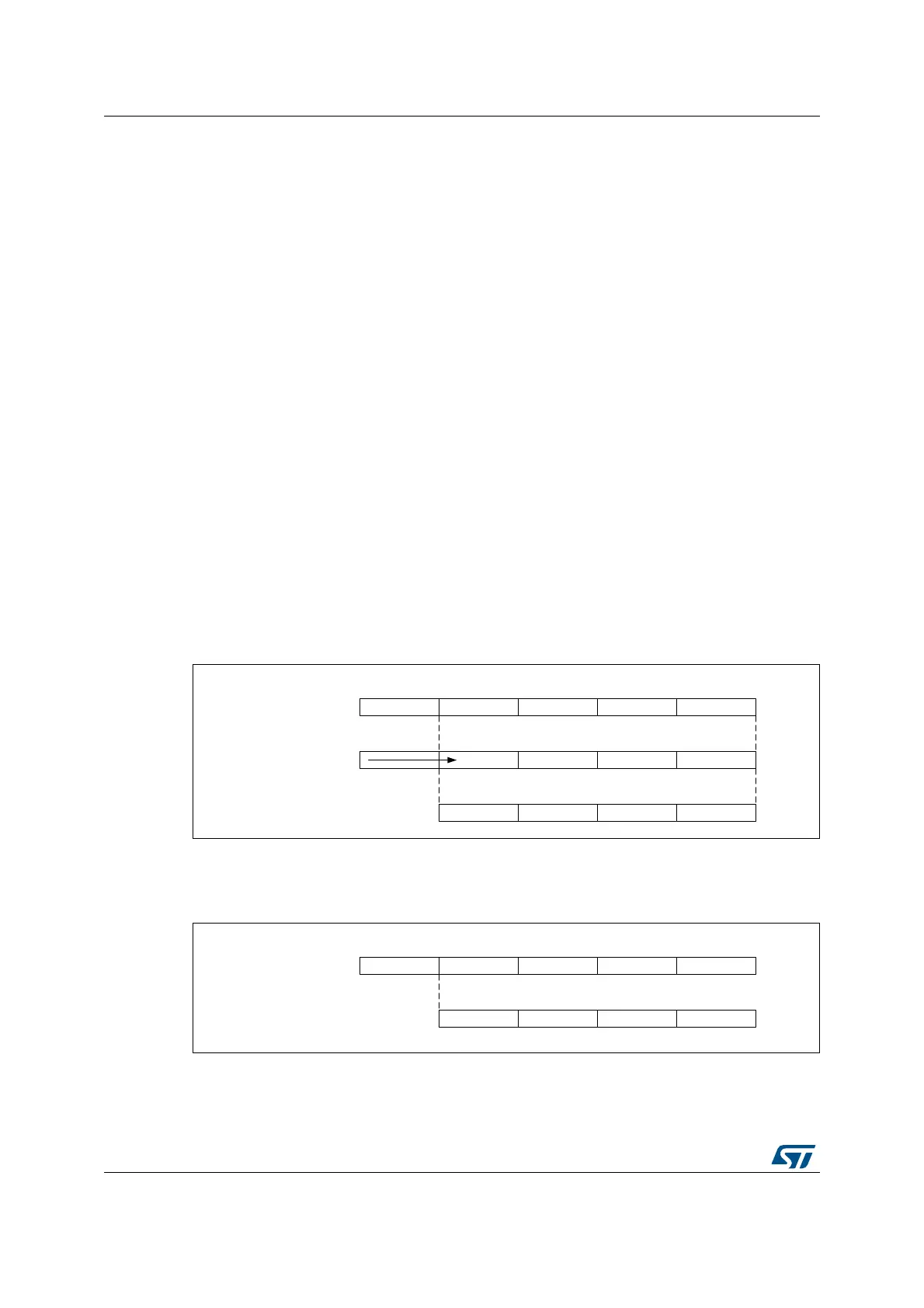Analog-to-digital converters (ADC) RM0351
554/1830 DocID024597 Rev 5
18.4.30 Oversampler
The oversampling unit performs data pre-processing to offload the CPU. It is able to handle
multiple conversions and average them into a single data with increased data width, up to
16-bit.
It provides a result with the following form, where N and M can be adjusted:
It allows to perform by hardware the following functions: averaging, data rate reduction,
SNR improvement, basic filtering.
The oversampling ratio N is defined using the OVFS[2:0] bits in the ADC_CFGR2 register,
and can range from 2x to 256x. The division coefficient M consists of a right bit shift up to
8 bits, and is defined using the OVSS[3:0] bits in the ADC_CFGR2 register.
The summation unit can yield a result up to 20 bits (256x 12-bit results), which is first shifted
right. It is then truncated to the 16 least significant bits, rounded to the nearest value using
the least significant bits left apart by the shifting, before being finally transferred into the
ADC_DR data register.
Note: If the intermediary result after the shifting exceeds 16-bit, the result is truncated as is,
without saturation.
Figure 111. 20-bit to 16-bit result truncation
The Figure 112 gives a numerical example of the processing, from a raw 20-bit accumulated
data to the final 16-bit result.
Figure 112. Numerical example with 5-bits shift and rounding
The Table 114 below gives the data format for the various N and M combinations, for a raw
conversion data equal to 0xFFF.
Result
1
M
---- -
Conversion t
n
()
n0=
nN1–=
∑
×=
069
5DZELWGDWD
6KLIWLQJ
7UXQFDWLRQDQGURXQGLQJ
069
'5DZELWGDWD
)%'
)LQDOUHVXOWDIWHUELWVKLIW
DQGURXQGLQJWRQHDUHVW
%

